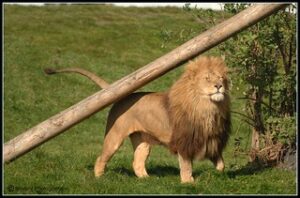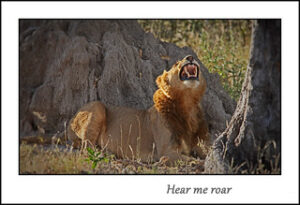Tanzania’s national parks are renowned worldwide for their exceptional biodiversity and iconic wildlife species. From the vast plains of the Serengeti to the lush forests of Gombe Stream. These protected areas harbor a rich tapestry of life. They offer visitors unparalleled opportunities to witness some of Africa’s most magnificent creatures in their natural habitats. Wildlife diversity of Tanzania’s national parks. Exploring the fascinating array of species that call these pristine landscapes home. let us delve into Understanding Tanzania wildlife.
Serengeti National Park – Understanding Tanzania wildlife
The Serengeti National Park is synonymous with the African safari experience. Renowned for its sweeping plains, teeming wildlife, and the iconic Great Migration. Covering an area of approximately 14,750 square kilometers. The Serengeti is home to an astonishing variety of animals, including the Big Five – lions, elephants, buffalo, leopards, and rhinos. As well as cheetahs, giraffes, zebras, hyenas, and countless others.
The park’s most famous residents are undoubtedly its predators. With an estimated 3,000 lions roaming its grasslands and woodlands. The Serengeti is also one of the best places in Africa to spot cheetahs in action. As well as elusive leopards lounging in the branches of acacia trees. During the Great Migration, millions of wildebeest, zebras, and other herbivores traverse the Serengeti in search of fresh grazing grounds. They attract predators and providing spectacular wildlife viewing opportunities.
In addition to its mammals, the Serengeti is a birdwatcher’s paradise, with over 500 bird species recorded within its boundaries. From majestic raptors such as eagles and vultures to colorful songbirds and waterfowl. The park offers endless opportunities for birdwatching enthusiasts to spot a diverse array of avian species.
Ngorongoro Conservation Area – Understanding Tanzania wildlife
The Ngorongoro Conservation Area, often referred to as the “Eighth Wonder of the World,”. It is a UNESCO World Heritage Site and a haven for wildlife in northern Tanzania. At its center lies the Ngorongoro Crater. A vast volcanic caldera teeming with an estimated 25,000 large animals, including lions, elephants, buffalo, rhinos, and various antelope species. The crater’s unique geography and abundant water sources support a rich ecosystem that sustains a diverse array of wildlife year-round.
Visitors to the Ngorongoro Crater can embark on game drives along its crater rim. Descending into the caldera to explore its grassy plains, acacia forests, and soda lakes. The crater also offers excellent opportunities for birdwatching, with over 400 bird species recorded in the area.
In addition to the Ngorongoro Crater, the conservation area encompasses a variety of other habitats. It includes highland forests, savannas, and montane grasslands. These diverse ecosystems provide refuge for a wide range of species, from endangered black rhinos and rare wild dogs to endemic birds and small mammals.
Tarangire National Park – Understanding Tanzania wildlife
Tarangire National Park, located in northern Tanzania, is famous for its towering baobab trees, dense elephant populations, and diverse wildlife. Covering an area of approximately 2,850 square kilometers. The park is home to the largest concentration of elephants in Tanzania, with herds numbering in the hundreds roaming its savannas and woodlands. In addition to elephants, Tarangire is known for its abundant predators. They include lions, leopards, cheetahs, and hyenas. The park’s varied habitats support a wide range of ungulates, such as zebras, wildebeest, giraffes, and impalas, as well as rare species such as the fringe-eared oryx and the gerenuk.
One of the highlights of a visit to Tarangire is witnessing the iconic baobab trees that dot the landscape. Their massive trunks and gnarled branches silhouetted against the African sky. These ancient trees provide important resources for wildlife, including shelter, food, and water, making them focal points for wildlife viewing and photography.
Selous Game Reserve – Understanding Tanzania wildlife
Selous Game Reserve, located in southern Tanzania, is one of the largest protected areas in Africa and a UNESCO World Heritage Site renowned for its pristine wilderness and diverse ecosystems. Covering an area of approximately 50,000 square kilometers, Selous is home to large populations of elephants, hippos, crocodiles, and other iconic species, as well as predators such as lions, leopards, and African wild dogs.
The reserve’s network of rivers and wetlands provides vital water sources for wildlife, attracting large herds of animals during the dry season. Visitors to Selous can explore the reserve on game drives, boat safaris, walking safaris, and fly-camping expeditions, allowing for immersive experiences in the African bush.
One of the unique attractions of Selous is the opportunity for river safaris along the Rufiji River, which meanders through the heart of the reserve. Boat trips offer a chance to spot hippos, crocodiles, and a variety of bird species, as well as enjoy stunning sunset views over the water.
Selous also offers exclusive and remote accommodation options, including luxury tented camps and wilderness lodges nestled in pristine surroundings. Whether seeking a romantic getaway or a family adventure, Selous Game Reserve provides an unforgettable safari experience.
Lake Manyara National Park
Lake Manyara National Park, situated at the base of the Great Rift Valley escarpment, is a compact yet diverse park known for its scenic beauty, abundant birdlife, and tree-climbing lions. Covering an area of approximately 325 square kilometers, the park is centered around Lake Manyara, a shallow alkaline lake that attracts flocks of flamingos and other water birds throughout the year.
In addition to its birdlife, Lake Manyara is home to a variety of mammals, including elephants, giraffes, zebras, and buffalo. However, the park is most famous for its population of tree-climbing lions, which are often spotted resting in the branches of acacia trees. Visitors to Lake Manyara can explore the park on game drives along its network of dirt roads, stopping at viewpoints and picnic sites to admire the scenery and watch wildlife. The park also offers walking safaris and night drives for those seeking more immersive and off-the-beaten-path experiences.
In addition to its wildlife attractions, Lake Manyara National Park is renowned for its lush groundwater forest, where visitors can take guided walks to spot troops of baboons, blue monkeys, and other primates. The park also offers a range of accommodation options, from luxury lodges to campsites, allowing visitors to spend the night surrounded by nature.
Ruaha National Park – Understanding Tanzania wildlife
Ruaha National Park, located in central Tanzania, is the country’s largest national park and a hidden gem for safari enthusiasts seeking remote and unspoiled wilderness. Covering an area of over 20,000 square kilometers, Ruaha is characterized by its rugged landscapes, ancient baobab trees, and diverse wildlife.
The park is home to large populations of elephants, lions, leopards, and other predators, as well as rare and endemic species such as the sable antelope and the African wild dog. Visitors to Ruaha can explore its vast savannas, riverine forests, and rocky escarpments on game drives, guided walks, and fly-camping expeditions.
One of the highlights of a visit to Ruaha is the opportunity to witness the dramatic encounters between predators and prey that unfold along the park’s rivers and waterholes. Crocodile-infested rivers and bustling hippo pools provide thrilling backdrops for wildlife sightings and photography opportunities. Ruaha also offers exclusive and intimate accommodation options, including luxury tented camps and boutique lodges nestled in secluded locations. Whether seeking adventure or relaxation, Ruaha National Park promises an unforgettable safari experience in the heart of Tanzania’s wilderness.
Conclusion
Understanding Tanzania wildlife involves understanding Tanzania’s national parks as havens for wildlife, harboring a rich diversity of species that captivate and inspire visitors from around the world. From the iconic plains of the Serengeti to the lush forests of Gombe Stream, each park offers a unique opportunity to witness some of Africa’s most magnificent creatures in their natural habitats. Whether embarking on a classic safari adventure, tracking chimpanzees in the rainforest, or birdwatching along the shores of a tranquil lake, Tanzania’s national parks promise unforgettable experiences and lasting memories for all who venture into their pristine landscapes.





